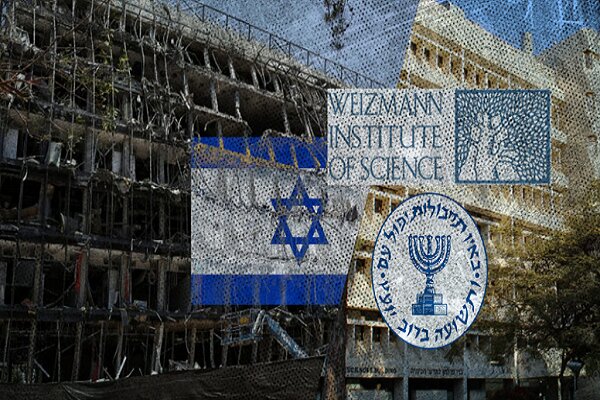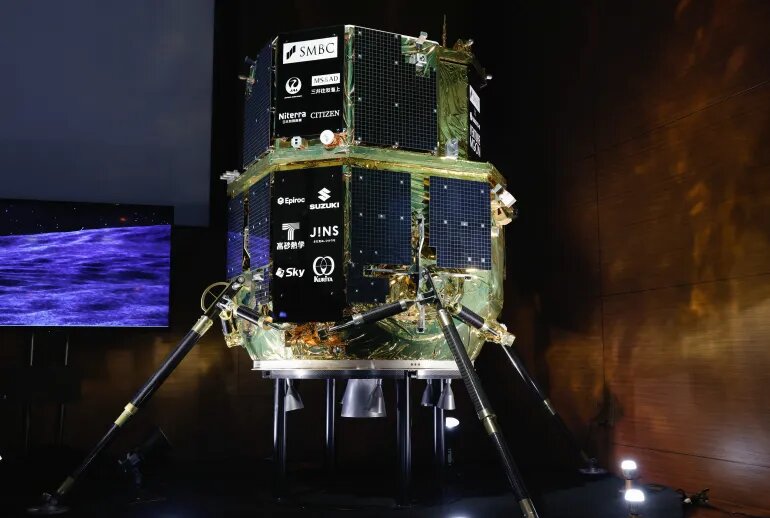
Once the cornerstone in the scientific and military research of the Israeli regime, the institute, known for its close relationships with the Israeli military industrial complex, is now destructive and non -operational.
According to the Israeli media, the accurate strike was “far from the cross” and targeted the advanced research center related to the Tel Aviv regime army, in areas such as physics, biotechnology and artificial intelligence.
In a media interview with Channel 13, Alon Chen, head of the Israeli Institute of Weizmann, admitted that Iranian ballistic missiles hit the main buildings inside the sprawling complex very accurately, causing extensive damage that could not be compensated.
His statement contradicts the previous allegations made by some regime officials that missile strikes were random and that the damage caused by the minimum.
“The destruction is widespread, and our initial assessments indicate damage between 300 million dollars to half a billion dollars,” Chen told the Israeli television channel.
He explained that the institute complex consists of two parts, one of which is the smaller and greater scientific residential, adding that “Iran targeted the latter, which means that they struck the heart of the institute, and the strikes were very accurate.”
When the reporters asked him about the regime’s control over the images that show the extent of damage, Chen confirmed the restrictions, explaining that they aim to prevent Iran from obtaining information that could help future attacks on these sites.
“It should be recognized that the Iranians have monitored the missile strike sites in Israel, not only in Weizmann, but in many military bases and strategic sites that we have not publicly disclosed,” he said.
Channel 13 stated that the situation is that the community of Israeli settlers is still unaware of the accuracy, extent of Iranian attacks and damage to many sites.
Despite the censorship efforts, footage and monitoring pictures appeared, and revealed ballistic strikes on the buildings and the severe destruction it caused.
Contracts of research lost
On June 15, 2025, Iranian ballistic missile strikes caused significant damage to the Weizmann Institute of Science in Rehavot, located in the occupied Palestinian territories.
Multiple facilities have been targeted and destroyed within the institute complex.
The newly made chemistry and science science laboratory, which is scheduled to open in 2025, suffered from catastrophic damage, as some reports were described as being effectively destroyed.
A building for life and mathematical sciences was severely hit, as fires erupted at least one laboratory. This facility includes decisive research programs, including cancer research and regenerative medicine.
Among the most difficult success of Professor Elda Tazhir, an expert in the regeneration of the heart. His laboratory was completely demolished, destroying thousands of heart tissue samples, DNA and RNA groups, allocated antibodies, and engineering viruses, which represent more than 22 years of research.
“In less than 15 minutes, I saw pictures of fire that consumes the laboratory that was my second home for 22 years. Three floors,” Zahir said.
Nearly 45 laboratories were searched throughout the institute, affecting about 400 to 500 researchers. The affected laboratories extended life sciences, molecular biology, and neural biology, which leads to the loss of substances that cannot be compensated such as tissue slices and cell lines.
The planetary science building, which includes geological chemistry laboratories and other chemistry programs, was severely affected, not by direct strike but by shocks from a missile that hits the adjacent chemistry building. Although it is not directly targeted, the facility has become very useful.
In general, about 90 percent of the institute’s buildings were exposed to some forms of damage, from direct missile strikes to the side damage caused by shock waves, shrapnel, and fires, including shattered windows, collapsed laboratory floors, destroyed electrical systems, and water damage to fire extinguishing.
The strikes also disrupted access to common scientific equipment and expensive and specialized machines used by multiple research groups, which increases the exacerbation of the massive losses of the institute.
Physical damage is estimated at 300 million dollars and $ 570 million, with the expectation that reconstruction efforts will take years. However, the loss of the value of biological samples and search data for decades is indispensable in many cases.
An institute with strong military ties
The Weizmann Institute is presented to the same science as a “civil” scientific institution, where it has published many of its research publicly in academic magazines. However, many of its projects interfere with military research, although these ties are not always disclosed publicly.
Israeli and Western media sources often emphasize the achievements of the institute in basic and applied sciences, such as physics, chemistry, biology and mathematics, which reduces its relations with military applications.
However, the Weizmann Institute maintains clear and documented links to the Israeli army by cooperating with military contractors such as Elbit Systems, AI’s II Intelligence Research (AI), drone technology, double use innovations, and nuclear research.
In October 2024, the institute announced a partnership with Elbit Systems, a major Israeli military contractor, to develop “vitality inspired materials for defense applications”, and explicitly linked the institute to the development of military technology.
In addition, the Weizmann Institute cooperated with Elbit Systems on projects including developing and providing the space telescope for the Israeli (Ultrasat) program. While this program is officially scientific, it has been recognized by dual use applications.
Kiriyat Faizmann Park hosts nearby Israeli weapons companies such as Raphael, Israel, the space industries space (IAI), and Elbit Systems, the three largest military contractors in the Israeli regime, create a research and development environment where the institute generally supports defense industries.
Several research programs are also funded by the Institute by the Israeli Ministry of War Affairs, which enhances its role in the military industrial complex.
The Weizmann Institute was recognized as a major contributor to Israeli military capabilities in the fields including artificial intelligence, drone technology, cybersecurity, material science, quantum computing, independent systems, electronic tracking, jamming, and alternative navigation.
According to these technologies, Israeli military operations are supported, including the coordination of the air stranger, the medical progress in the battlefield, and the electronic defense strategies.
The institute graduates of the elite military units such as unit 8200, the most important intelligence division in the system and the Internet war, and the Talpiot program, which trains scientific and technological military experts in Israel.
Specific laboratories, like Professor Iran Sigal, have been linked to the development of decisions to make decisions in the battlefield and monitoring in the actual time used in the Israeli military aggression, including in Gaza and Iran.
Some researchers also focus on protecting drones from eavesdropping, which directly contributes to military technology.
Roots of the Military Institute
During the war of aggression in 1948 and the ethnic cleansing of the Palestinians, known as Nakba, the Weizmann Institute has officially established its equipment and campus facilities at the disposal of the Zionist Palf of the Zionist Hagana Group, and then the newly originated Israeli army.
The faculty and students at the institute began developing and producing a variety of weapons, including plastic explosives, missiles fed by artificial payments, mortars and artillery shells, as well as igniting mechanisms for Nabalm, tear gas and mines.
By the end of Nakba in 1948, the institute became a major column in the Military Science Corps. In addition to technology, it appeared as a major military axis of the Israeli regime.
Senior officials and faculty members from the Weizmann Institute and the navigation of the technology of developing the Israeli Industrial Complex continued. They defended the idea of establishing Israeli scientific research as a basis for military power, as they pushed to develop indigenous and manufacture advanced weapons.
In this chase, these scientists often clashed with the Israeli military leadership, which tends to prefer a more conservative approach to military research and development and prefer to buy weapons from foreign suppliers.
In the end, the scientists prevailed, and they gained a great influence. The Military Science Corps was separated from the General Military Command and turned into the Research and Design Directorate, headed by Ernest David Bergman, one of the founders of the Fayzman Institute and senior officials.
The mastermind of the illegal Israeli nuclear program
The Weizmann Institute has always been linked to the Israeli nuclear program, especially through Ernest David Bergman, former head of the institute and the first chairman of the Israeli Atomic Energy Committee, established in 1952.
Bergman was widely recognized as a major engineer for the development of Israeli illegal weapons of Israel. During the fifties of the last century, the institute contributed to early nuclear research, including extracting uranium from phosphate deposits in the Negv desert.
Many scientists working at the Shimon Peres Negev Center for Nuclear Research (DIMONA) – the main facility for the Israeli nuclear weapons program – graduates or faculty members at the Weizmann Institute.
The most recent studies, such as a joint report of 2014 issued by the University of Cincinnati and Tel Aviv University, indicate that the institute has played an important role in training scientists with experience in nuclear physics, thus laying the basis for the nuclear capabilities of Israel.
Investigations at the FBI claimed that the Fayezman Institute conducted research related to the development of nuclear and traditional weapons, and may have reached secret US military systems.
For decades, Israeli media and officials described the institute as the “technological spine” and “scientific and military brain” of the system, which confirms its strategic importance.
After the successful missile strike last month, Israeli officials and the media quickly filmed the institute as a purely civilian, and they are seeking to convert the blame on Iran and filming the attack as an unjustified revenge against Iranian civil scientific programs.
Source: Presstv
MNA/



